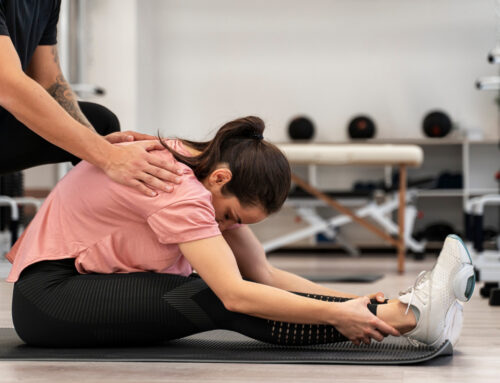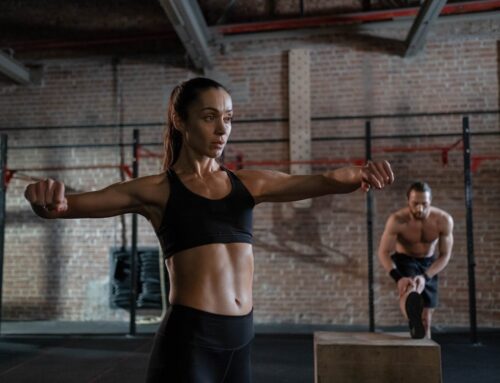Cycling is a beautiful sport- and a growing number of people around the globe can testament to the thrill they experience when on a bike. Some think that cycling greatly correlates with the science of positive psychology– potentially benefiting our physical and mental health, social circumstances, increasing gratitude and awareness, and more. While more people on bikes are experiencing positive effects, unfortunately, cycling isn’t without its risks. In this article, we will look specifically at ankle injuries and cycling, how they’re caused, and how they’re prevented. If you’d like to know more about cycling injuries overall, we have an article on preventing injuries while cycling that goes over the most common cycling injuries and how to prevent them.
Common Cycling Ankle Injuries
Cycling injuries are relatively common in comparison to other sports. Knee pain and patellofemoral syndrome have been shown to have the highest overuse injuries in cycling. While ankle injuries are not as common, they do still affect some cyclists. We’re going to look at four different types of cycling ankle injuries: Achilles tendon injuries, ankle sprains, ankle bone fractures, and tarsal tunnel syndrome.
Achilles Tendon Injuries
Your Achilles tendon is a thick tendon at the back of your legs that connects parts of your calf muscles to your heel bone. The Achilles tendon is one of the strongest tendons in the body and helps the body push off through the legs when jumping, running, climbing, cycling, and more.
There are two main types of Achilles injuries: chronic Achilles tendonitis and acute Achilles ruptures.
Chronic Achilles Tendonitis
Chronic Achilles tendonitis is a condition where the Achilles tendon becomes inflamed and painful. It typically develops over time and can be caused by repetitive stress or overuse of the Achilles tendon. Common symptoms include pain, stiffness, and swelling in the affected area. You might also experience clicking or snapping in the ankle or back of the leg.
When cycling, chronic Achilles tendonitis can be caused by a number of reasons, including:
1. Improper Bike Fit
If your bike isn’t fitted to your body correctly, it can cause your foot to be in an awkward position, which can put unnecessary stress on the Achilles tendon. At ISMI, we offer bike fitting services to correctly fit your bike to your body!
2. Pushing Yourself Too Far Too Fast
Cycling long distances or training too hard without giving the body enough time to rest and recover can lead to chronic Achilles tendonitis. Inflammation of tendons throughout the body is commonly caused by overuse.
3. Incorrect Pedaling Technique
Using the wrong pedaling technique or pushing too hard on the pedals can strain your Achilles tendon. While pedaling may seem extremely straightforward, there is technique behind pedaling efficiently and smoothly! After all, this is the main connection point between you and your bike- so improper pedaling can directly impact your Achilles tendon. Make sure to pedal all the way through the “circle” to recruit needed muscles within a proper form.
4. Tight Calf Muscles
Tight calf muscles can significantly impact the Achilles tendon because the Achilles tendon connects the calf muscles to the heel bone. When the calf muscles are tight, they can place additional stress and tension on the Achilles tendon. Tight muscles can limit the range of motion of the ankle joint, which can reduce the ability to push off the ground, thus putting strain on the Achilles tendon. Strength and flexibility training can help tight calf muscles.
5. Poor Footwear
Some cycling shoe designs, like those with a high heel cup or a very stiff sole, can contribute to Achilles tendonitis. These designs are mainly seen among road cycling shoes or track cycling shoes. There isn’t a one-size-fits-all approach to choosing proper footwear- it will vary depending on the cyclist’s foot anatomy and biomechanics.
Treatment for chronic Achilles tendonitis may include RICE (rest, ice, compression, and elevation), physical therapy, stretching exercises, and in severe cases, surgery. It’s important to seek medical attention if you are experiencing pain in the Achilles tendon, as untreated chronic Achilles tendonitis can lead to a tendon rupture.
Acute Achilles Ruptures
An Achilles tendon rupture is a condition where the strong, fibrous tissue that connects the calf muscle to the heel bone tears or snaps, often causing sudden and intense pain in the back of the leg. You may have difficulty walking, experience swelling, or see a noticeable gap in the tendon where the rupture has occurred.
Achilles tendon ruptures aren’t very common among cyclists. While there has been a lack of research on the exact incidence of Achilles tendon ruptures in cyclists, research suggests that they are more commonly seen in sports that involve jumping or explosive movements, such as basketball, football, or soccer.
Cycling can still put stress on the Achilles tendon, and a rupture can occur due to several reasons:
1. Improper Bike Fit
One clinic has found that “Lowering your seat and making sure that your cleats aren’t pushed all the way forward towards the toe will help to even out the muscles you’re using to pedal… Moving your cleats backwards, just 3-5mm can help.” Adjusting your bike fit is something you could research and do yourself, but speaking to a specialist at your bike shop who’s already familiar with your bike specifications may get you a closer and more accurate fit.
2. Incorrect Pedaling Technique
As we stated with causes of chronic Achilles tendonitis, an incorrect pedaling technique can also lead to a possible tendon rupture.
3. A History of Achilles Tendon Injuries
A history of Achilles tendon injuries can increase the risk of re-injury. When an injury occurs, the body responds by laying down scar tissue to repair the damaged tissue. This scar tissue may be weaker and less flexible than the original tissue, making the tendon more prone to re-injury. Repeated injuries can lead to degeneration or thinning of the tendon, making it more susceptible to rupture.
4. Sudden Collisions
Sudden collisions while cycling can impact many different parts of the body. This includes the Achilles tendon depending on the accident.

Ankle Sprains, Fractures, and Tarsal Tunnel Syndrome
Ankle Sprains & Bone Fractures
Ankle sprains and bone fractures can occur during collisions where the outside forces impact the ankle bones and/or twist the ankle joint. Cyclists can prevent these injuries by wearing appropriate footwear, making sure their bike is fitted properly, and taking steps to prevent falls and collisions.
Tarsal Tunnel Syndrome
Tarsal tunnel syndrome is a condition that can affect cyclists and other athletes that use repetitive motions. The tibial nerve, which runs through the tarsal tunnel in the ankle, is connected to the foot and some foot muscles. The repetitive motion of pedaling can put pressure on the tibial nerve, which can then cause swelling and pain. Prevention includes proper bike fit, proper footwear, a gradual increase in training intensity, and *cross-training with other activities that can strengthen the feet and ankles. Tarsal tunnel syndrome can be treated with rest, anti-inflammatory medication, and physical therapy.
We don’t want you to throw in the towel with your favorite sport because of a fear of injury. Here are some of our main takeaways that can help you stay safe on the road:
- Wear proper protective gear such as a helmet, proper footwear, and gloves.
- Research proper training and stretching techniques to treat and avoid injury.
- Have your bike properly fitted, and petals adjusted as needed.
- Learn proper technique.
- Seek medical help when necessary.
- Review top tips for cycling safety on the road.
Contact Idaho Sports Medicine Institute today if you’d like to learn more about recovery from cycling injuries. We also offer bike fitting services so you can prevent injuries from happening in the first place.
*Please always consult your physician before beginning any exercise program. This general information is not intended to diagnose any medical condition or to replace your healthcare professional. Consult with your healthcare professional to design an appropriate exercise prescription. If you experience any pain or difficulty with these exercises, stop and consult your healthcare provider.





